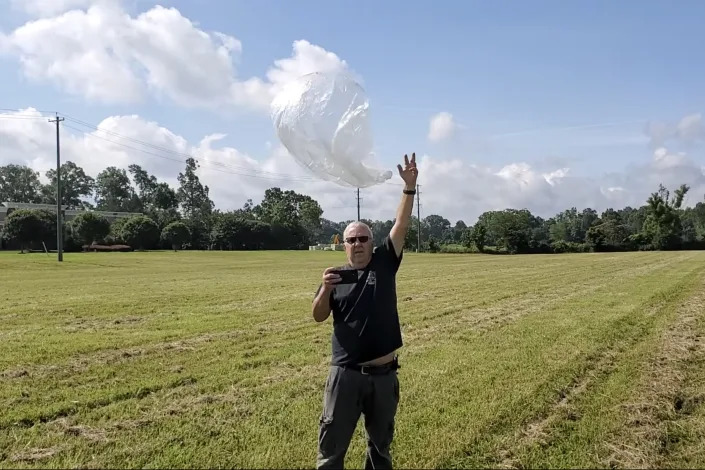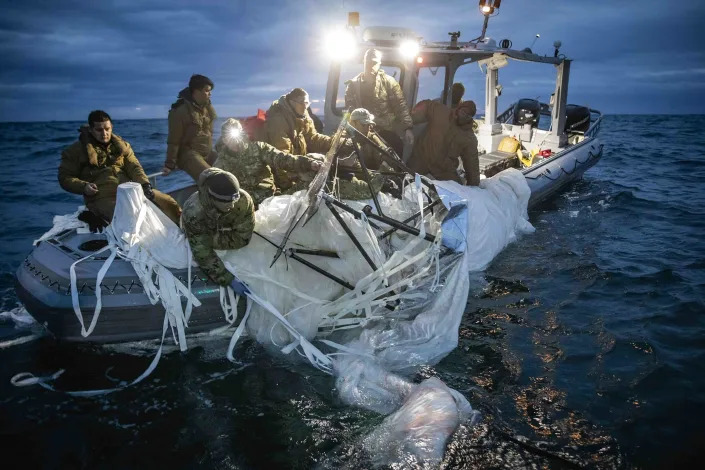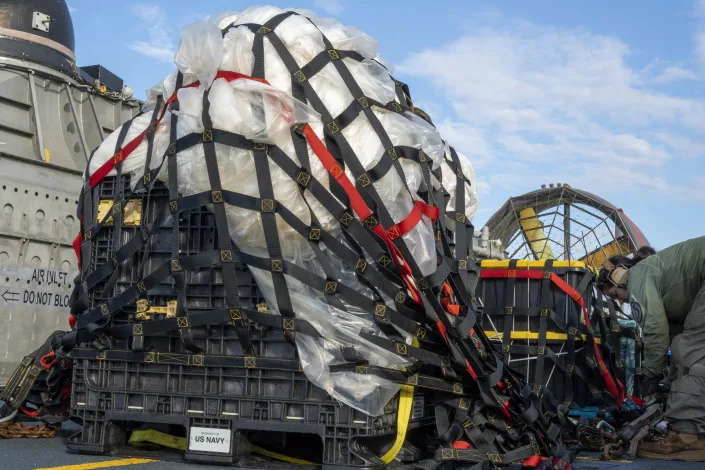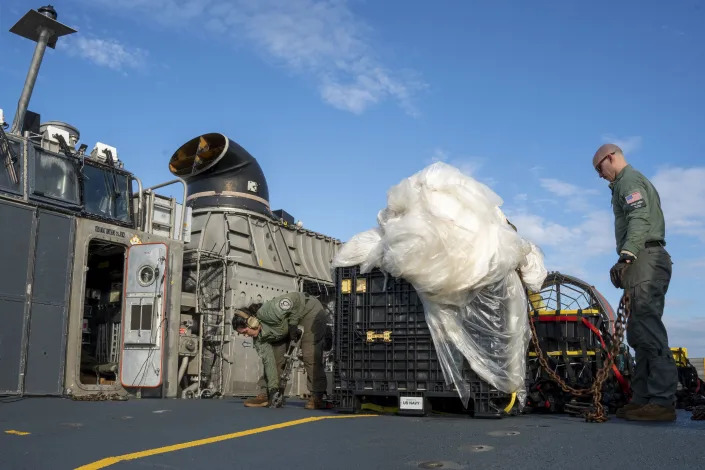Civil Service has ‘no automatic right to exist’, warns Cabinet Secretary
Gordon Rayner
Fri, 17 February 2023

Simon Case - Dan Kitwood/Getty Images
The Civil Service has “no automatic right to exist” and must “seize the moment” to reform itself, the Cabinet Secretary has said.
Simon Case, the head of the Civil Service, said the 500,000 people who work under him must “earn and re-earn” the support and consent of the British public by working in their interest.
He reminded senior mandarins that their “marching orders” come from the Government and it is their job to “deliver on their promises”.
Mr Case has been fighting for his job in recent weeks amid claims that senior colleagues have tried to undermine him by leaking stories to the media about his handling of a number of controversies, including the Dominic Raab “bullying” saga.
He was hired by Boris Johnson to spearhead Whitehall reform – which made him unpopular with some senior staff – and has since served under Liz Truss and Rishi Sunak, both of whom saw him as the right man for the job.
Mr Case used a lecture at Bristol University, in his home city, to underline his determination to modernise the service.
He said: “The Civil Service is accelerating progress in critical areas. Focusing even more on outcomes, growing our skills, making better use of data … and we must do this because, like every institution, we have no automatic right to exist.
“If people see and believe that institutions are operating effectively, delivering in their interests, they’re more likely to trust them … if people feel an institution is no longer working in their interest, the relationship is at risk.”
‘Civil servants advise, politicians decide’
Civil servants, including those at the top of Whitehall departments, have been accused in recent months of failing to instigate government policy, and Mr Case told them: “Our marching orders come from the government of the day, which acts on behalf of the electorate.
“Civil servants advise, politicians decide. We answer to them day in, day out, for the advice we give and how effectively we are delivering on their promises.”
Mr Case set out five tests “to monitor how well we are earning and re-earning the support and consent of the people”, which comprised knowing who the “customers” are, staying true to the core purpose of the service, updating methods to stay relevant, managing risk proportionately and having the right people in the right places.
He cited the pandemic as an example of the Civil Service being able to react quickly to an unforeseen threat, and told his audience: “We must seize the moment and not miss the opportunity to keep applying the many lessons we learn – sometimes painfully, often successfully – from the day-to-day and the moments of crisis, to achieve lasting change.”
Mr Case defended the Civil Service and other traditional institutions by pointing out that, in totalitarian states, leaders such as Vladimir Putin “de-legitimise” institutions in order to create an “alternative and corrupting narrative”. But he said he could only give a “qualified defence” because critics “correctly call out our weaknesses”.
He delivered the lecture on Jan 25, but his comments have only just emerged. He was speaking days after it was reported that he had played an introductory role in discussions between Mr Johnson, future BBC chairman Richard Sharp and a third man, Sam Blyth, over an £800,000 home loan for the then prime minister.
Gordon Rayner
Fri, 17 February 2023

Simon Case - Dan Kitwood/Getty Images
The Civil Service has “no automatic right to exist” and must “seize the moment” to reform itself, the Cabinet Secretary has said.
Simon Case, the head of the Civil Service, said the 500,000 people who work under him must “earn and re-earn” the support and consent of the British public by working in their interest.
He reminded senior mandarins that their “marching orders” come from the Government and it is their job to “deliver on their promises”.
Mr Case has been fighting for his job in recent weeks amid claims that senior colleagues have tried to undermine him by leaking stories to the media about his handling of a number of controversies, including the Dominic Raab “bullying” saga.
He was hired by Boris Johnson to spearhead Whitehall reform – which made him unpopular with some senior staff – and has since served under Liz Truss and Rishi Sunak, both of whom saw him as the right man for the job.
Mr Case used a lecture at Bristol University, in his home city, to underline his determination to modernise the service.
He said: “The Civil Service is accelerating progress in critical areas. Focusing even more on outcomes, growing our skills, making better use of data … and we must do this because, like every institution, we have no automatic right to exist.
“If people see and believe that institutions are operating effectively, delivering in their interests, they’re more likely to trust them … if people feel an institution is no longer working in their interest, the relationship is at risk.”
‘Civil servants advise, politicians decide’
Civil servants, including those at the top of Whitehall departments, have been accused in recent months of failing to instigate government policy, and Mr Case told them: “Our marching orders come from the government of the day, which acts on behalf of the electorate.
“Civil servants advise, politicians decide. We answer to them day in, day out, for the advice we give and how effectively we are delivering on their promises.”
Mr Case set out five tests “to monitor how well we are earning and re-earning the support and consent of the people”, which comprised knowing who the “customers” are, staying true to the core purpose of the service, updating methods to stay relevant, managing risk proportionately and having the right people in the right places.
He cited the pandemic as an example of the Civil Service being able to react quickly to an unforeseen threat, and told his audience: “We must seize the moment and not miss the opportunity to keep applying the many lessons we learn – sometimes painfully, often successfully – from the day-to-day and the moments of crisis, to achieve lasting change.”
Mr Case defended the Civil Service and other traditional institutions by pointing out that, in totalitarian states, leaders such as Vladimir Putin “de-legitimise” institutions in order to create an “alternative and corrupting narrative”. But he said he could only give a “qualified defence” because critics “correctly call out our weaknesses”.
He delivered the lecture on Jan 25, but his comments have only just emerged. He was speaking days after it was reported that he had played an introductory role in discussions between Mr Johnson, future BBC chairman Richard Sharp and a third man, Sam Blyth, over an £800,000 home loan for the then prime minister.



